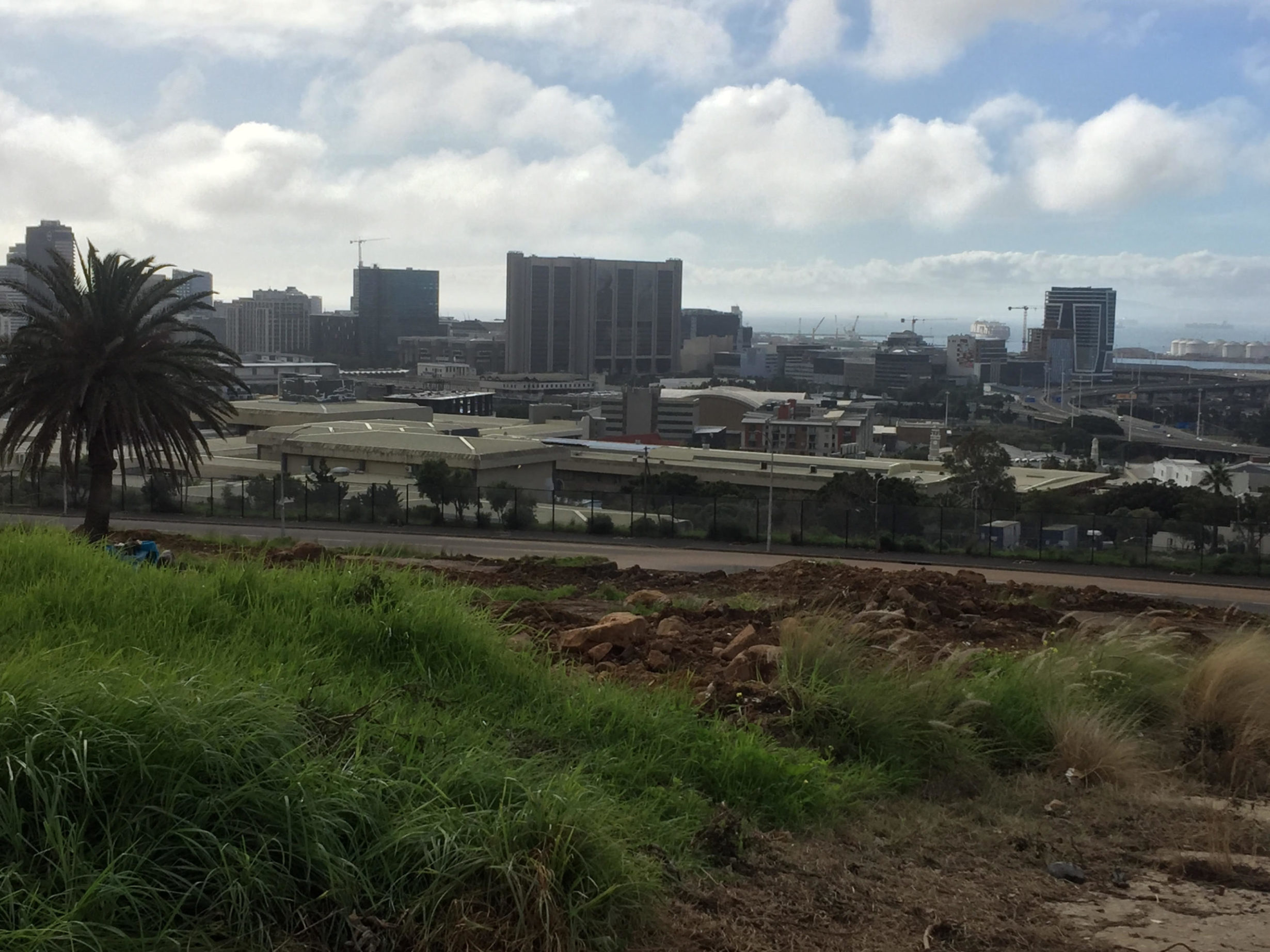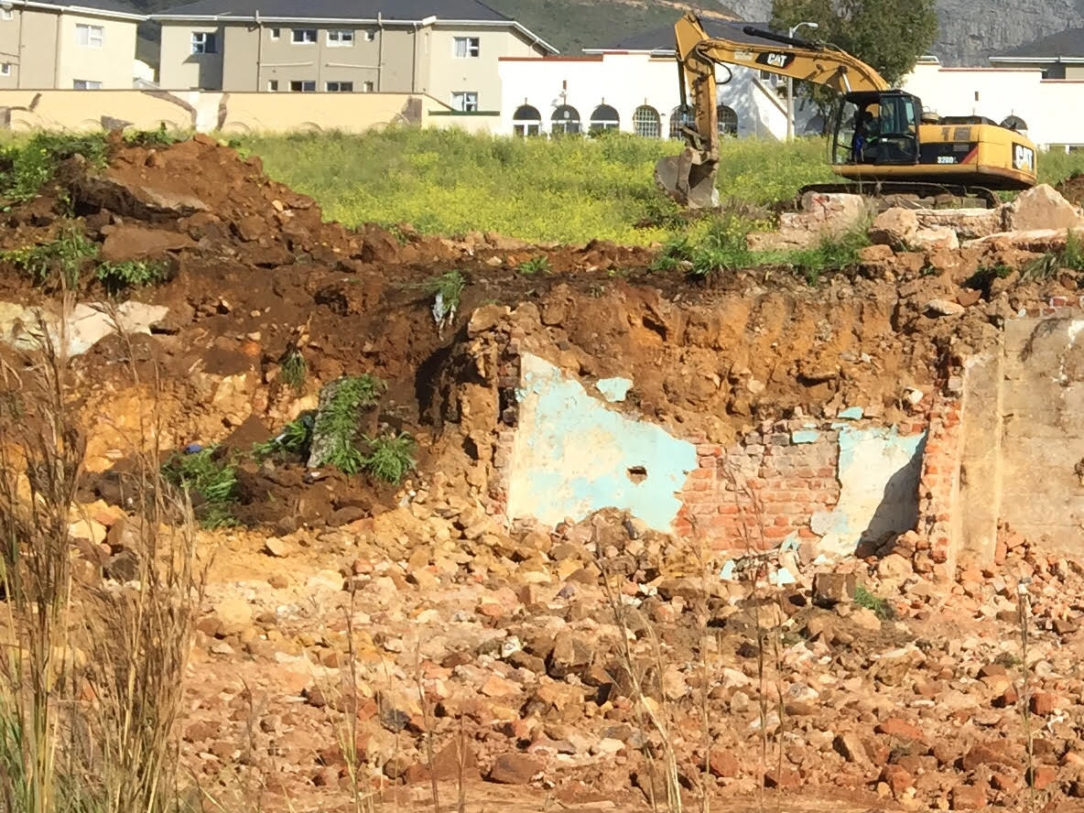It was unexpected. No one came around to even just put a note in the postbox. On Friday 26 June 2020 at just past 7.30am the shudder of excavators’ front buckets tearing into the ground started.
It was the first sign – in nearly two decades – of movement in the restitution of District Six. The process has been marked by politicking and bureaucratic snafus, divisiveness and court action – but also determination to get justice and restitution, right back to the 1988 launch of Hands Off District Six.
It comes some 16 years and five months after South Africa’s first democratically elected president, Nelson Mandela, on 11 February 2004 handed the keys of the first two of 24 homes to District Six beneficiaries Ebrahim Murat, 87, and Dan Ndzabela, 82 – the elders who returned from Retreat and Gugulethu respectively.
That date – 11 February – was not an accident. Mandela was released from jail on that day in 1990. District Six was declared white under the Group Areas Act on that day in 1966.
By 1982, 60,000 residents had been forcibly removed, shattering their lives, social networks and easy access to work in Cape Town’s city centre, and the land was bulldozed. Left standing were the churches and mosques.
The plans for District Six that have been making the rounds are, to put it mildly, disappointing. It seems a case of how to build 4,000 houses with the least cost and least hassle.

The palm remaining at District Six, looking out over Cape Town city centre and harbour. (photo: Marianne Merten)
The plans look cheap: a mix of terraced duplexes and multi-storey walk-ups without any green spaces for residents to enjoy, for children to play, and generally to be a green lung in an inner area. The specs, to a non-architect’s eye, look cheap.
And this is where this bit of history in the making misses a tremendous opportunity: To root a restituted District Six between the harbour and Table Mountain in creative urban spatial planning. To honour the legacy of those forcibly removed. To pay tribute to the role District Six played in South Africa’s literature, arts and music – from authors Bessie Head and Richard Rive, painter Gerald Sekoto to jazz maestro Abdullah Ibrahim.
District Six is a living memory, and not just for the elderly.
A friend speaks of her childhood memories visiting her grandfather at the top of District Six and walking her dachshund on land now being bulldozed. “There are many memories,” she smiles.
Another friend, himself with his family forcibly removed from Harfield in Claremont, tells me Constitution Street used to be much narrower. He hung out in District Six often and memories include Kewpie, the legendary drag artiste and hairdresser.
My friend Joe talks of how as a child he’d be carried on the shoulders of a minstrel when the klopse marched. And how he freely ran around District Six streets before his family was dumped on the Cape Flats.
“There are no memorials… Why is there not even a façade contemplated of how District Six used to look like? For example, with a tailor shop that someone could run,” he says of what’s planned.
And a general dealer. And a café that could double up as a base for tour guides so the significance of District Six, not only as a caution against discriminatory race laws, but also as tribute to the resilience and resistance that ultimately led to South Africa’s democracy in 1994.
Declaring District Six of national importance, effectively a heritage site, as the call was made earlier this year, may be a step towards this – a reimagining of Cape Town with a warning of apartheid injustice and in remembrance of people’s courage and resilience. But the lack of creative consideration on how to reconstruct District Six is not new.
The City most recently authorised the high-rise private apartment development that now stands right next to the N2 highway, a stone’s throw from the District Six homes left standing apparently because they are in what’s zoned for industrial use.
Multi-storey student accommodation has been built on the Cape Peninsula University of Technology (CPUT) District Six campus that is now also fenced off. But, in doing so, the historic Moravian Chapel and St Mark’s have disappeared from view and public access.
District Six is not the leafy suburbs, nor is it the fancy City Bowl.
The acrid smell of plastic being burnt off copper cables that frequently hung over the area only stopped recently. Police at the end of May arrested three people with relays worth R920,000.
The informal taxi rank that some months ago sprung up outside CPUT has expanded past the electrical substation – the bricks around there are regularly stolen – towards Holy Cross primary school. No one really takes notice of the nearby law enforcement mobile kiosk.
Today, just as over the past 100 years, the mosque in Muir Street, Zeenatul Islam Masjid, still broadcasts the athaan, the call to prayer. It’s something that makes this part of the city special, and allows one to mark the day’s progress.
People walk through District Six. Whether it’s the auntie getting off the MyCiti from work, the learners jostling in groups to catch buses and taxis when lessons are done, or the beggars and car guards going to hustle for change in town.
The arrival of the bulldozers and excavators at the end of June set in motion a series of intricate and interrelated dynamics.

A bulldozer uncovers the walls of an old house in District Six. (Photo: Marianne Merten)
The immediate impact was that the squatters, many of whom arrived over the past seven months and were let be, now had to move. First, just a little, then a bit further up to land that’s ultimately also earmarked for later development. Some returned to set up in-between the dongas left by the bulldozers.
While it’s unclear what happened to the people who lived in underground structures visible from the street only as a pile of stones, the man who settled underneath the palm remained as the tree was ordered protected from bulldozers by several metres of untouched ground.
Then the scrap metal pickers arrived.
Word travels; the excavators were unearthing stuff. Initially just one man stepped a curious dance around the bulldozer’s relentlessly moving front bucket. By the end of the week, five men were on site.
Scrap metal was carried off on a shopping trolley. Or on the white bakkie that came to collect the day’s pickings for several days, often loaded so low it was scraping the tar.
For days the thump thump of concrete being broken down to get to the rebars echoed till late. Yes, the bulldozers uncovered District Six homes, or at least the walls of homes that had been destroyed 40 years ago.
The excavators and bulldozers are working flat out, Monday to Friday. A caravan of trucks comes and goes from the site to transport off tons of earth. For now the big boulders are left.
Exactly what will happen next, and when, is unclear.
Make no mistake, District Six claimant beneficiaries must return to where they, and their families used to live. It is a crucial, and far too long delayed move to restore dignity and for social justice.
And yet, simply filling up the empty land that by its emptiness in central Cape Town was a reminder of past injustice, seems somehow falling short, a compromise of sorts.
How cities shape their public spaces and how public memory is expressed are fundamental indicators of a society’s values. Alongside utilitarian needs of housing, transport and the like, public spaces can celebrate achievement – and to reflect the common commitment never again to allow the undemocratic, the brutal and the dehumanising. A commitment against forgetting, so to speak.
District Six is such a space.
For now, the bulldozers and excavators are prepping the ground for houses as living history unfolds – one bit at a time. DM
















 Become an Insider
Become an Insider